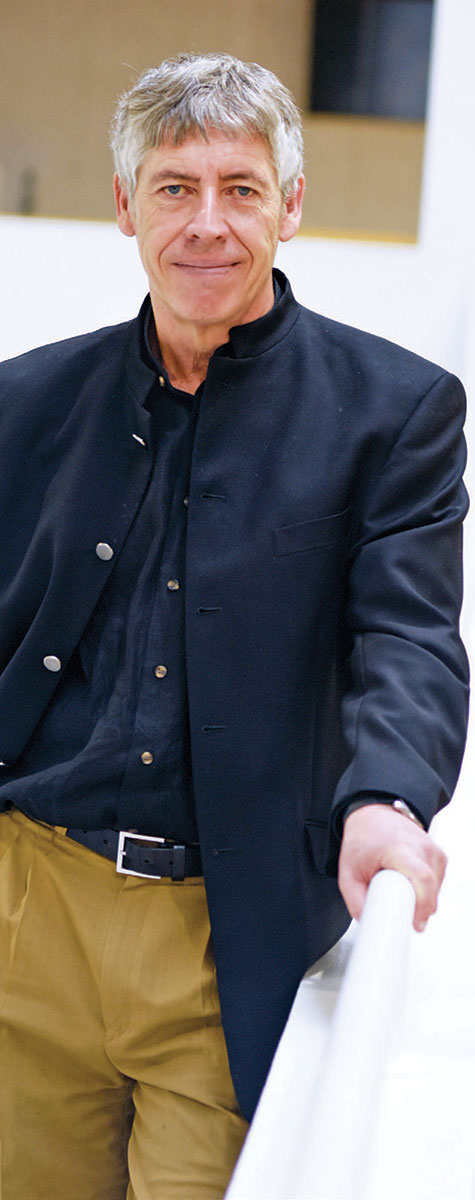
 Professor Julio Bermudez directs the Cultural Studies and Sacred Space graduate program in the School of Architecture and Planning. His current research looks at how the experience of architecture can induce a sense of the divine.
Professor Julio Bermudez directs the Cultural Studies and Sacred Space graduate program in the School of Architecture and Planning. His current research looks at how the experience of architecture can induce a sense of the divine.
What makes space sacred?
Certain features of architecture are conducive to creating a contemplative mind. Some people will feel that as a presence of God, some will feel it as a sense of liberation, joy, awe, and so on. So, how do we keep reminding ourselves of the continuously abiding God, this transcendent force, or love, or however we want to define this ultimate mystery? What can we do to bring God into presence for a majority of people?
There are at least three different possibilities: the aesthetic — which is beauty, the sublime, space with high ceilings, light entering a certain way, or material that has been exquisitely crafted. Another way allows us to engage with others through empathy, love, and giving. It consists of creating environments that bring different people together; I call this the ethical/compassionate dimension of architecture.
Another way would be to fundamentally challenge convention. A good example is the Jewish Museum in Berlin designed by architect Daniel Libeskind. There’s this incredible ‘zigzag’ building that defies imagination and demands attention. It both broadcasts and embodies the tragic history of Jews in 20th-century Germany and it’s there, unavoidably, for everybody to see.
Can history render space sacred?
History gives sacredness even to non-sacred space. The whole Washington Mall is really sacred space in a secular way. It expresses our democratic values and makes them available for pilgrimage. People come to pay tribute to the ideals of the American project. For me, a very sacred secular space is the Salk Institute in La Jolla, Calif., by architect Louis Kahn. There is no possibility of being in that space without a sense of transcendence.
As a person who trains the next generation of architects, which is going to face a reality vastly more complicated and more difficult than today, I think I have a duty to let them know that architecture has a spiritual responsibility within the world.
What happens in our brains when we’re in sacred space?
Architecture is an external means to facilitate contemplation. Reality itself collapses; physical materiality opens up the metaphysical experience. It’s a paradox, and yet it does happen. You use the body to transcend the body. That’s the only way to do it — after all, we are embodied beings.
I selected five buildings designed to put people in a contemplative state: three Catholic, one Muslim, and one secular. I showed these buildings to people and, with an fMRI, measured their brain activation. The deeper the contemplative state produced by these buildings, the more areas of the brain associated with ordinary mentation were shut down, whereas those related to non-self centeredness, absorption, and high attention were activated.
Do you think of any buildings as the most sacred on Earth?
I’ll start with the Pantheon in Rome. I would definitely add the Chartres Cathedral; the Salk Institute; and Sagrada Familia in Barcelona. I think the Oculus by architect Santiago Calatrava in New York is profound. It’s the commuter station at the site of the 9/11 memorial, the closest thing to a cathedral that we have built in the 21st century. I don’t think it’s necessarily sacred, but you could have a sense of awe and find God there. Those are remarkable buildings.